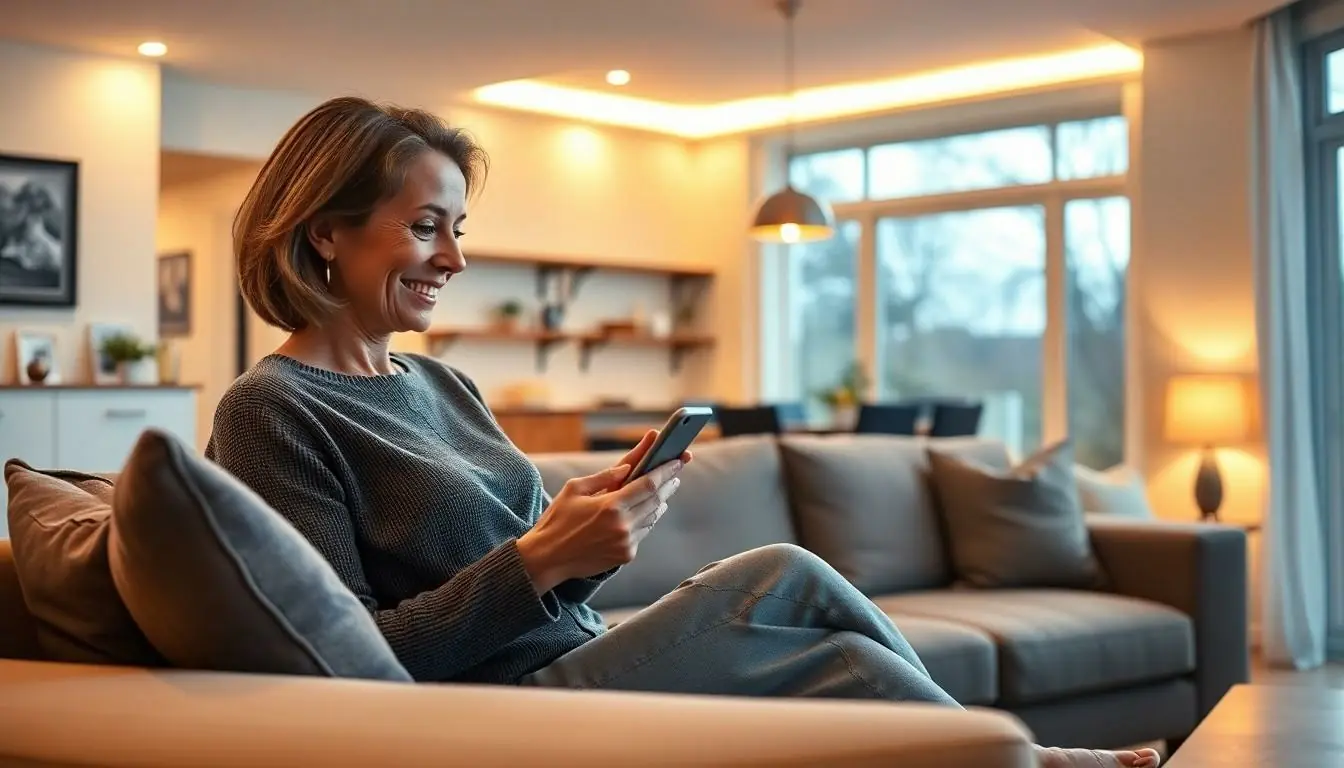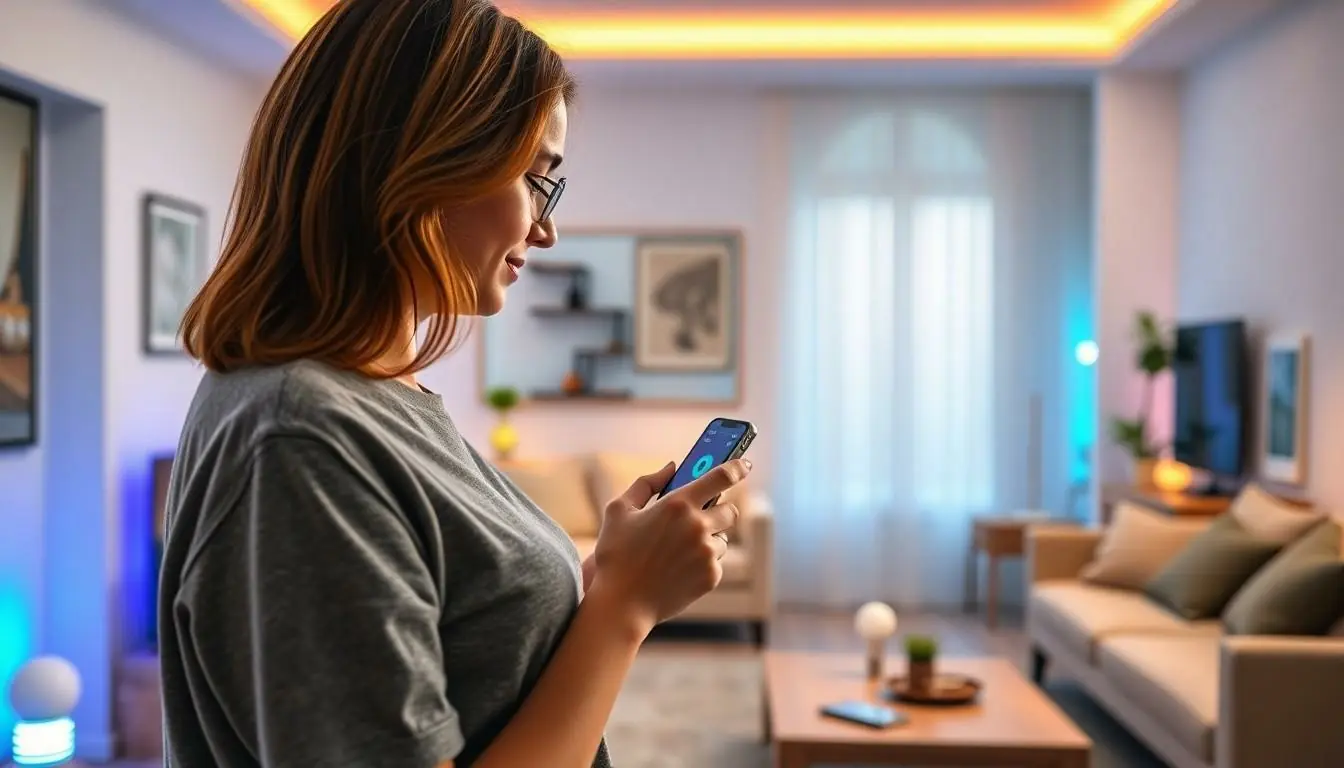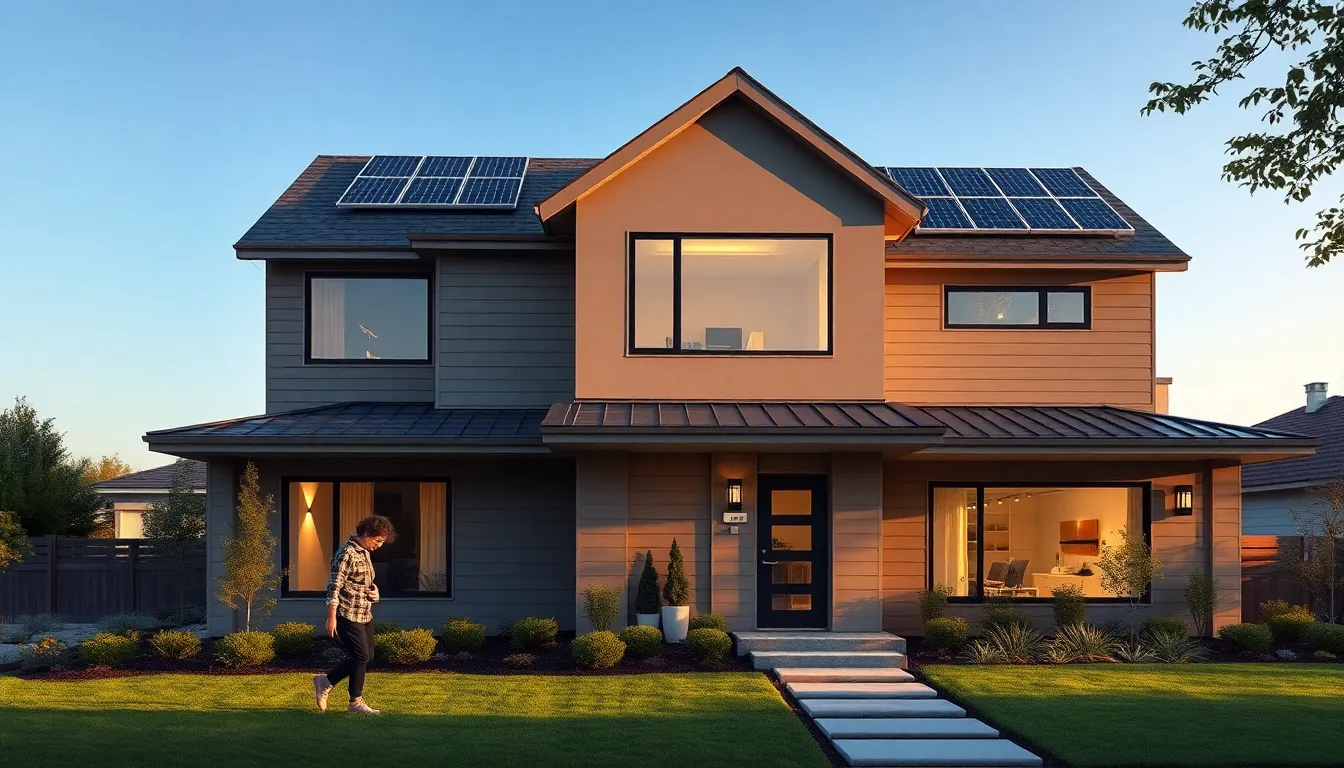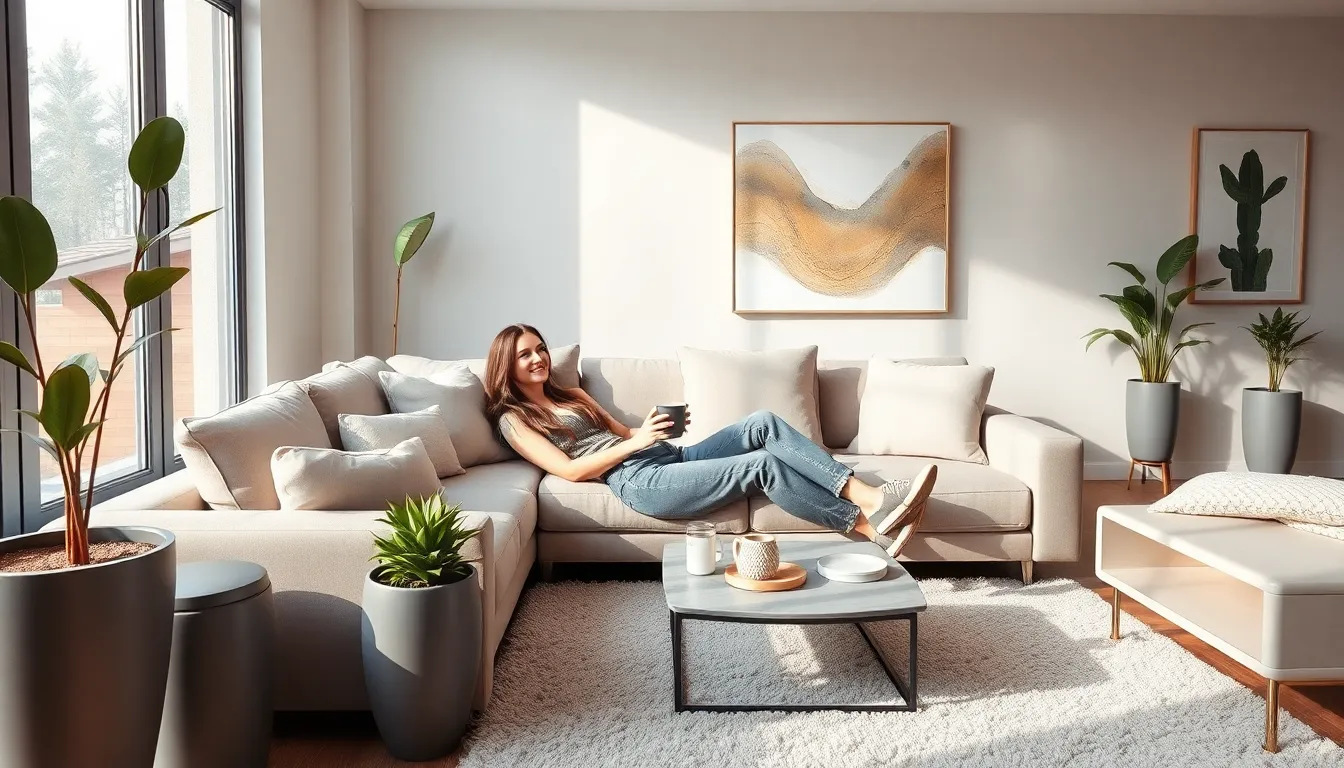Imagine walking into your home and having the lights greet you like an old friend—no more fumbling for switches in the dark. Smart home lighting control takes the hassle out of illuminating your space, allowing you to set the mood with a simple voice command or a tap on your smartphone. It’s like having a personal lighting assistant who never takes a coffee break.
Table of Contents
ToggleOverview of Smart Home Lighting Control
Smart home lighting control streamlines the management of residential lighting through innovative technology. Users benefit from the convenience of adjusting illumination levels and colors remotely via smartphone apps or voice commands. This system enhances energy efficiency by allowing homeowners to set schedules and automated lighting scenes.
Users can also customize lighting preferences based on different activities or times of day. For example, reading, entertaining, or relaxing can each have tailored lighting settings. Smart lighting networks integrate with various smart home devices, enabling seamless communication within the ecosystem.
Installation of smart lighting often involves smart bulbs, light switches, and hubs. These devices connect to Wi-Fi or Bluetooth, making it easy to control lighting from anywhere. Many smart lighting systems support compatibility with popular voice assistants like Amazon Alexa and Google Assistant.
Data from recent surveys indicates that 75% of users report increased comfort and convenience after implementing smart lighting. Additionally, over 60% of users express satisfaction with their energy savings due to automated schedules and motion sensors. Enhanced control over lighting contributes to improved safety; users can schedule lights to mimic occupancy when away from home.
App integration allows real-time monitoring and management. Some systems provide features such as dimming, color changes, and scene adjustments through simple taps or voice prompts. Homeowners can modify their environment to suit their mood or occasion effortlessly. Smart home lighting control shapes contemporary living, offering aesthetic appeal alongside functional benefits.
Benefits of Smart Home Lighting Control

Smart home lighting control offers numerous advantages that enhance daily living. Users experience a seamless way to manage their lighting environment, fostering improved efficiency and comfort.
Energy Efficiency
Energy efficiency stands as a key benefit, with smart lighting systems enabling precise control over power usage. Homeowners can program schedules, ensuring lights operate only when needed. According to recent surveys, more than 60% of users report noticeable energy savings after implementing smart lighting. By employing automated scenes, lights adjust according to activities, reducing waste. Some systems even allow users to monitor energy consumption in real time, promoting conscious consumption. The ability to dim lights also contributes to energy efficiency, as lower brightness requires less electricity. This combination of features leads to significant reductions in utility bills.
Convenience and Comfort
Convenience and comfort significantly enhance the smart home experience. Users can control lighting through voice commands or smartphone apps, eliminating the hassle of traditional switches. Many systems integrate with popular voice assistants, making adjustments effortless. Customizable settings allow users to create cozy atmospheres tailored to personal preferences. For instance, different lighting scenes can be established for movie nights or dinner parties, setting the ideal mood. With the ability to schedule lights, users benefit from automatic adjustments throughout the day. The peace of mind offered by smart home lighting extends to security as well; users can simulate occupancy even when away, boosting overall safety. This unique blend of features truly transforms how individuals interact with their homes.
Types of Smart Lighting Systems
Smart lighting systems offer various options for enhancing home illumination. Here are some common types:
Smart Bulbs
Smart bulbs provide an easy upgrade for traditional light fixtures. These LED-based bulbs connect to Wi-Fi or Bluetooth, allowing users to control brightness and colors through mobile apps or voice commands. Many options are compatible with smart home ecosystems. More than 75% of users appreciate the ability to change ambiance seamlessly. These bulbs often support customizable schedules, fostering energy savings. Users can access a range of colors for different moods and occasions. Often, one can set scenes for relaxation, work, or entertainment effortlessly, enhancing the home’s atmosphere.
Smart Switches and Plugs
Smart switches and plugs offer another level of control for existing lighting solutions. These devices replace standard switches or plug into outlets, enabling remote operation of conventional lights. Users can integrate them into their smart home systems, linking lights to voice assistants. Over 60% report enjoying greater convenience and control. Automating lighting schedules becomes possible, which reduces unnecessary power consumption. These devices can also enhance safety by scheduling lights to turn on while homeowners are away. Many options allow for easy installation without extensive rewiring, making smart lighting more accessible.
Key Features to Consider
Smart home lighting control systems offer several essential features that enhance usability and efficiency.
Compatibility with Smart Assistants
Smart lighting systems need compatibility with major voice assistants like Amazon Alexa and Google Assistant for optimal functionality. Users enjoy hands-free control through simple voice commands, streamlining daily routines. Compatibility allows for easy integration into existing smart home ecosystems, making setup more straightforward. Many systems provide seamless connections, encouraging enhanced user interaction. Surveys show that compatibility with smart assistants significantly boosts satisfaction among more than 60% of users.
Customization Options
Customization options play a vital role in smart lighting solutions. Users can modify brightness levels and color temperatures through mobile apps or voice commands, tailoring their environment to suit various moods. Flexible schedules allow for automated adjustments at specific times, like setting warm tones during evening hours. Many systems support multiple lighting scenes, accommodating different activities such as reading or entertaining. As a result, over 75% of users appreciate having personalized lighting experiences that align with their lifestyles.
Smart home lighting control represents a significant advancement in home automation. It not only enhances convenience but also promotes energy efficiency and security. By integrating smart lighting systems into daily routines, homeowners can enjoy personalized experiences that cater to their unique lifestyles. The ability to adjust lighting remotely or through voice commands simplifies tasks and contributes to a more comfortable living environment. As technology continues to evolve, the benefits of smart lighting will likely expand, making it an essential component of modern homes. Embracing this innovation can lead to a more enjoyable and efficient home experience.



